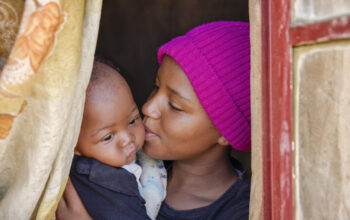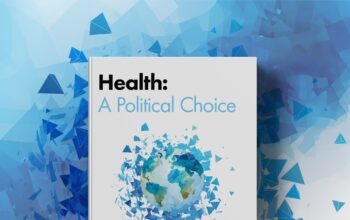The role of vaccines in tackling influenza
With new modelling from the Centers for Disease Control and Prevention (CDC) estimating up to 650,000 deaths annually associated with respiratory diseases from seasonal influenza, here I look at the important and on-going role vaccines play in tackling the disease and the innovations helping increase prevention.
Influenza, commonly known as flu, is an acute respiratory infection caused by influenza viruses. Many of us know about and have suffered its symptoms. Each year as many as 5 million people worldwide suffer from influenza and this new data show many more deaths are related to influenza than the previous estimate of 250,000 to 500,000 deaths per year.
Everyone is at risk of influenza but certain groups like the elderly, young children, pregnant women and those with chronic medical conditions are particularly vulnerable (this is why the World Health Organization (WHO) recommends those groups get vaccinated every year).
Unlike most diseases, influenza viruses can change each season so previous vaccinations may not be protective against the currently circulating strains. Regular vaccinations help prevent people from getting influenza and the serious complications associated with the disease. Many people can walk around for up to a week before realizing they have flu, infecting people at work and school. Having the influenza vaccine is not only individually protective, but it helps limit the spread of the virus in the population. Secondly, if someone does become sick, vaccination helps reduce intensity of symptoms. In this Ted-Ed video, educator Melvin Sanicas explains why it is important to have an annual flu shot.
Using research and surveillance data influenza experts meet many months before each Southern and Northern hemisphere influenza season to recommend the types of influenza viruses to include in the vaccine. This is part of a global surveillance network that is led by the WHO and brings together partners throughout industry and public health. Following these twice yearly recommendations, influenza vaccines are manufactured to contain three or four of most common strains that are expected to circulate in the upcoming season. While huge resources and expertise are dedicated to predicting the virus strains that will dominate each influenza season, their changing nature makes it impossible to predict with complete accuracy. This video and infographic illustrates the complexity associated with making a flu vaccine.
The ability of flu vaccine to protect a person depends on various factors, such as the age and health of the person vaccinated, an individual’s previous exposure and the similarity or “match” between the virus strains used to make the vaccine and those circulating in the community. While influenza vaccine effectiveness varies season-to-season and person-to-person, it remains the best tool we have to protect against influenza. Some countries, like the US recommend a vaccination for anyone over 6 months old to reduce the spread of influenza through the community. This further protects against the variability of vaccine effectiveness and groups that are more vulnerable to infection.
Most influenza vaccines available today are produced using egg-based technology. However, there has been substantial investment in vaccine innovation over the years. These efforts have focused on improving vaccine performance for at risk groups and the development of new production technologies and delivery methods. New influenza vaccines have been developed to help the elderly have a stronger immune response while new cell-based production technologies and recombinant hemagglutinin (HA) protein vaccine, offer the potential of a closer match to the circulating strains. A nasal spray influenza vaccine has also been developed for children and adults with needle phobias.
Some studies suggest that a seasonal vaccination can offer some cross-protection against pandemic strains but more research is needed. A pandemic occurs when a new type of influenza virus, which people have never previously been exposed, spreads quickly through the population and has high rates of mortality.
The most significant relationship between seasonal and pandemic influenza is the year round manufacture of seasonal influenza vaccine, which allows manufacturers to quickly switch production to a new pandemic vaccine when speed is essential. Greater volumes of seasonal vaccine doses allow more doses of pandemic vaccine manufacturers to be produced during a pandemic emergency.
You can read about the work of public health agencies and industry to contribute to global pandemic preparedness through the Pandemic Influenza Preparedness Framework.
The new global estimate for annual influenza related deaths should help to reinforce the important collaboration between public health and industry bodies and global efforts to tackle and prevent the disease.
Author






